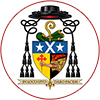“IMMORTALITY IN QUESTION”
The 2014 Pluscarden Pentecost Lectures – given by Professor Carol Zaleski,
Professor of World Religions at Smith College in Northampton, Massachusetts, USA
10th – 12th June 2014 at Pluscarden Abbey
1. Tuesday 10 June at 2.45 pm
The problem with immortality – we don’t know how to think about it
2. Wednesday 11 June at 10.15 am
The problem with heaven – imagination can’t grasp it
3. Wednesday 11 June at 2.45 pm
The problem with hell – love can’t bear it
4. Thursday 12 June at 10.15 am
The problem with purgatory – Christians can’t agree on it
Each year the Abbot and Community of Pluscarden Abbey sponsor a series of four lectures by an invited Theologian on an aspect of Catholic Theology. Previous Lecturers have included Fr Vincent Twomey S.V.D., Professor Lewis Ayres, Professor John Haldane, Fr Aidan Nichols OP, Fr Thomas Weinandy OFM Cap, Fr Anthony Meredith SJ, Fr Paul McPartlan and Fr Tom Herbst OFM. The Lectures are held on the Tuesday, Wednesday and Thursday after Pentecost in St Scholastica’s Retreat House at the Abbey. They are open to all who wish to attend and are free. Limited accommodation is available at the Abbey and those who wish to stay should book as soon as possible. There are also many places to stay in the Elgin area: contact the local tourist office: 01343 542666.
The Lecturer
Carol Zaleski is the Professor of World Religions at Smith College, where she also chairs the Department of Religion. She earned her B.A. from Wesleyan University and her M.A. and Ph.D. in the study of religion from Harvard University. She has been teaching philosophy of religion, world religions, and Catholic thought at Smith College since 1989. Zaleski is the author of Otherworld Journeys: Accounts of Near-Death Experience in Medieval and Modern Times and The Life of the World to Come (both Oxford University Press); she is also a columnist and editor-at-large for The Christian Century. She has co-authored, with her husband Philip Zaleski, Prayer: A History (Houghton Mifflin), The Book of Heaven (Oxford), The Book of Hell (forthcoming, Oxford), and a group biography of the Inklings—C.S. Lewis, J.R.R. Tolkien, Charles Williams and their circle (forthcoming, Farrar, Straus & Giroux). Together, Carol and Philip Zaleski are long-time friends of Pluscarden Abbey and oblates of the twin Benedictine communities at Petersham; and they are closely associated with the British Catholic journal Second Spring and its founding editors Stratford and Léonie Caldecott.
The Lectures: “Immortality in Question”
Introduction
With few exceptions, icons of our Lord’s Descent into Hell have a curious detail in common: they show Christ seizing Adam by the wrist rather than by the hand, as he pulls our first parents out of the cave, or the jaws, or the prison, of death. It’s a small detail but, as these four lectures will suggest, it captures in miniature precisely what is distinctive about the Christian understanding of immortality.
My premise is that this distinctive understanding of immortality is not widely understood -- and in some quarters is actually under siege. In these lectures, I will be considering problems that are typically raised by Christians as well as non-believers, occasionally looking over the fence at other religions whose traditions may enrich our understanding, and reflecting upon solutions that become available when we seek to think with the mind of the Church.
Lecture 1. The problem with immortality – we don’t know how to think about it
The expression ‘immortality of the soul’ went out of fashion in the mid-twentieth-century, but it is making a comeback, thanks in no small part to Joseph Ratzinger’s magisterial 1977 book Eschatology: Death and Eternal Life. Christian theological anthropology affirms the creatureliness as well as the dignity of the human person and places the hope for immortality wholly in the hands of our loving Redeemer.
Lecture 2. The problem with heaven – imagination can’t grasp it
If heaven seems boring, as the cliché has it, it is due to an atrophy of our reason, imagination, and love; restless until our hearts rest in God, we cannot help but form an inadequate picture of divine peace. Some seek a cure for heaven-fatigue in poetry, but the best cure is a poetic life, living by a Rule not of our own making, by the Church’s rather than the world’s clock, in the bright shadow of eternity.
Lecture 3. The problem with hell – love can’t bear it
Most serious Christians have sought to affirm at once God's universal salvific will and our creaturely freedom to accept or reject His love. Thus Hans urs von Balthasar could ‘dare to hope that all men will be saved’ while C. S. Lewis, no less hopeful, maintained that hell is ‘locked from the inside.’ This lecture will consider the present state of the question as Christians grapple with the problem of hell.
Lecture 4. The problem with purgatory – Christians can’t agree on it
Purgatory is a belief founded on the practice of care for the dead, present in germ throughout world religions, fully articulated (and discriminated from ‘hell lite’) by the Catholic tradition, rejected by the Reformers, but resurfacing wherever suppressed (consider Hamlet and The Four Quartets). Christians of many confessions are coming to see the wisdom of C.S. Lewis’s observation that ‘our souls need purgatory’; and this development brings with it new opportunities for ecumenical understanding.
For further information or to book accommodation, contact the Abbey.
















